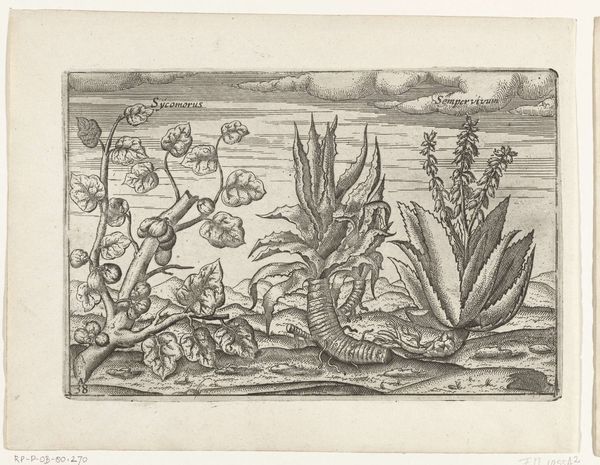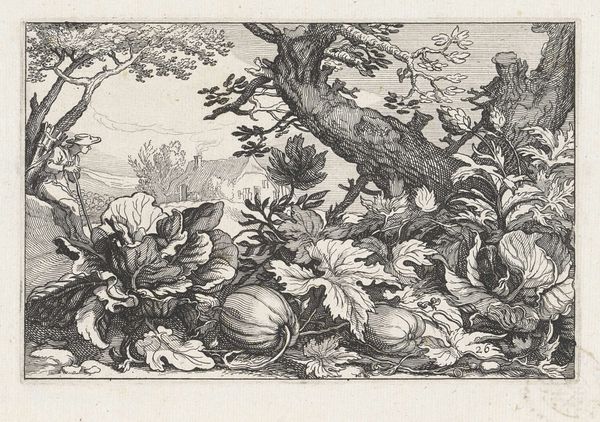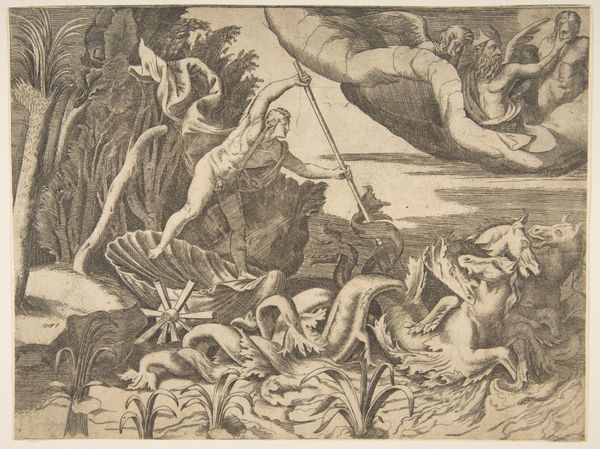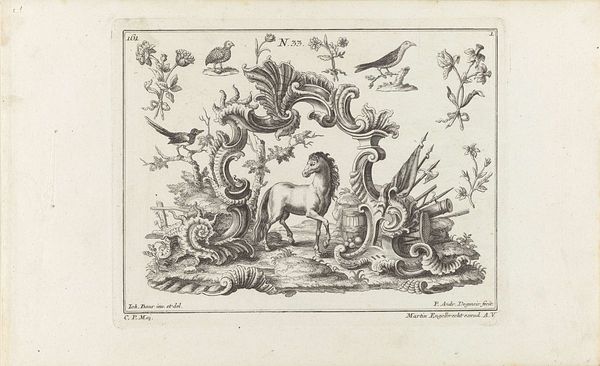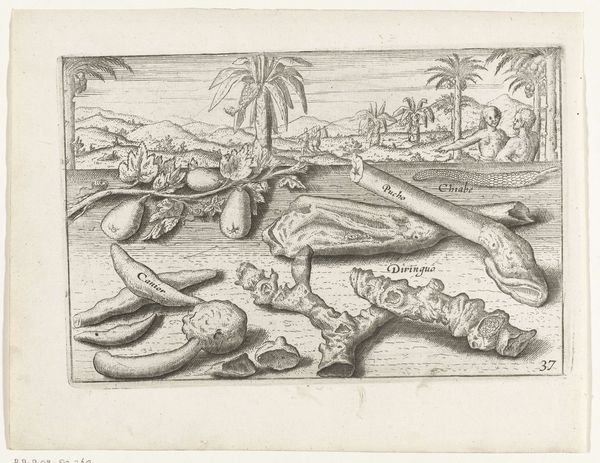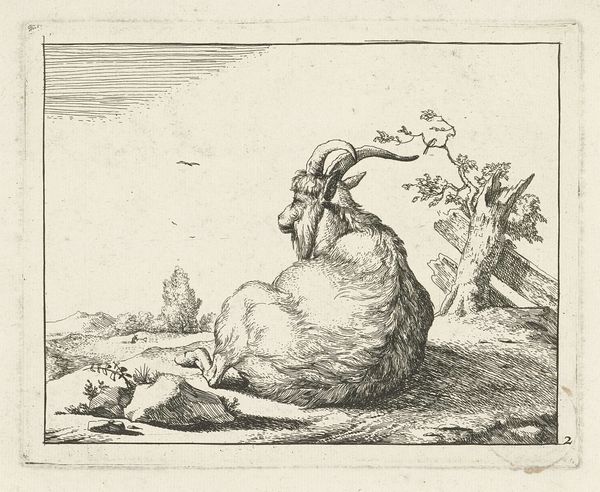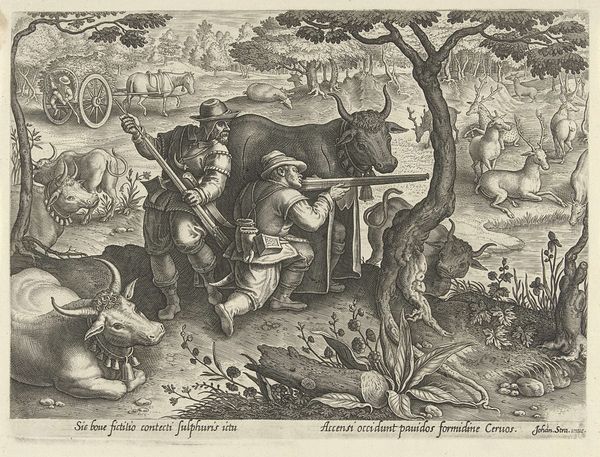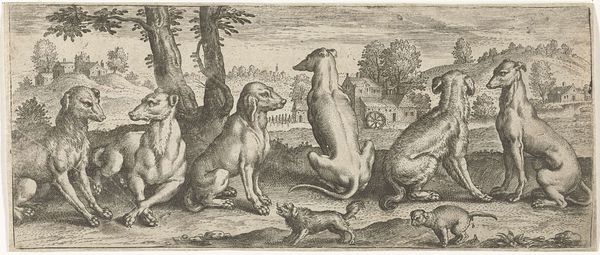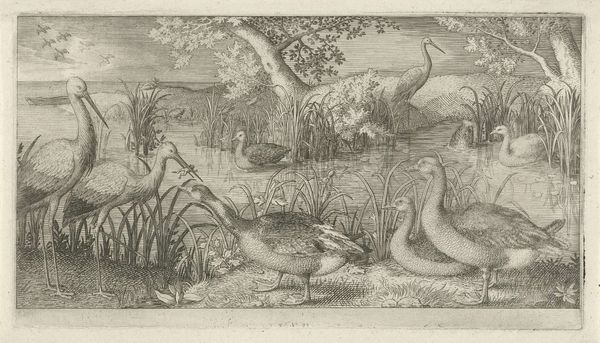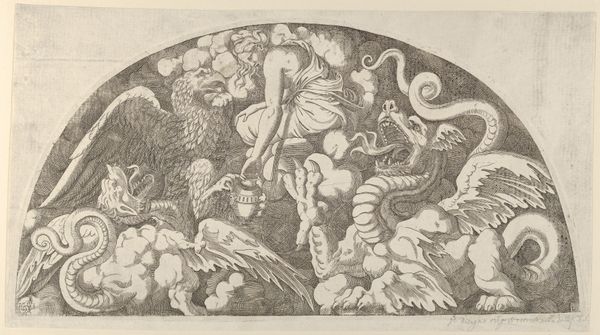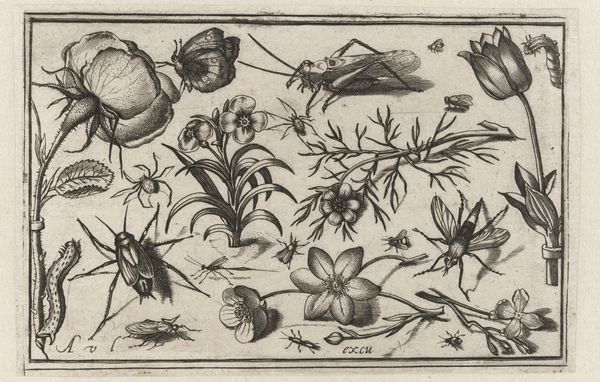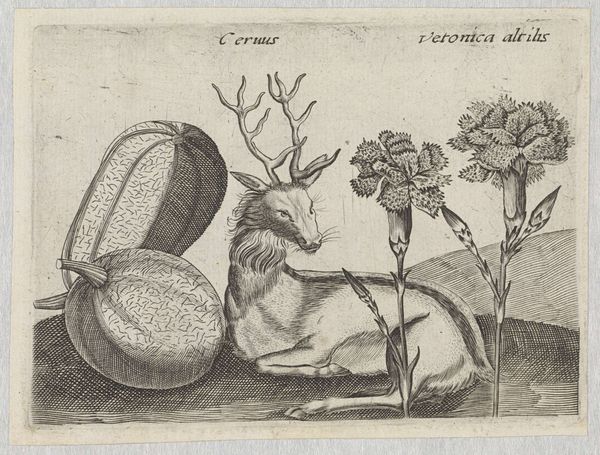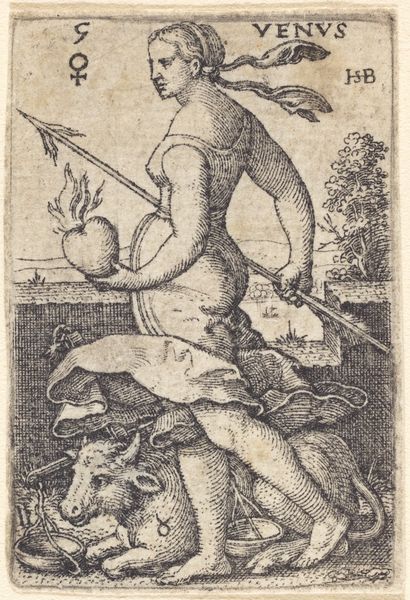
print, engraving
# print
#
landscape
#
flower
#
northern-renaissance
#
engraving
Dimensions: height 100 mm, width 118 mm
Copyright: Rijks Museum: Open Domain
Curator: Ah, look at this fascinating print, "Series of Prints with Flowers and Animals in a Landscape," crafted around 1600-1605 by Johann Hogenberg. It’s an engraving, giving us a detailed glimpse into the artistic practices of the Northern Renaissance. Editor: My first thought is tranquility. It's small, intricate, almost like peering into a miniature world filled with quiet observation. The textures seem very tactile despite being a print. Curator: Indeed. Consider the painstaking work involved. Every line was etched by hand into the copperplate. The varying densities of lines create tonal shifts. This was labor, skilled artisanal labor intended for reproduction, widening the reach of imagery beyond painting. We must appreciate the network involved; from the artist to the printer to the consumer. Editor: And each of those images chosen tells a story. Flowers, so often symbols of fleeting beauty or love; small animals caught in what could be an Eden before the fall. Even that hedgehog seems to be examining those pears for the first sin, and the pears have long carried significance for temptation. Is this piece simply a tranquil garden scene or something deeper? Curator: The symbolism may indeed have multiple layers. The plants and animals carry associations connected to religious allegory but the naturalistic depictions were fueled by expanding interest in scientific study. These natural historical renderings needed artisans to bring them to wider audiences. This intersection of scientific and artisanal production influenced how knowledge itself was shared and received. Editor: So it's this convergence between observation, craft, and this almost subliminal messaging—of mortality, temptation—that makes it a more powerful visual experience. Look at how everything seems suspended in stillness as if frozen by observation. Curator: It encapsulates a unique moment, capturing production methods that bridged the gap between art, science, and the hand-crafted object. What do we gain from appreciating art as crafted material meant to circulate widely versus fetishized object that hangs on the walls of the wealthy elite? Editor: Precisely. Focusing on both the cultural meaning *and* materiality enhances our comprehension, doesn't it? The symbols layered within this accessible medium show lasting connections to humanity's past.
Comments
rijksmuseum about 2 years ago
⋮
In making his representations of flowers and animals Hogenberg borrowed freely from prints by other artists. Some combinations are endearing, others slightly bizarre. What does a polar bear have to do with artichokes? It is precisely the series’ mixture of originality and naiveté that is so appealing to modern eyes.
Join the conversation
Join millions of artists and users on Artera today and experience the ultimate creative platform.

